Disclosure: This article contains affiliate links. We may earn a commission from purchases at no extra cost to you, which helps our travel content.
The morning mist clung to the Carpathian peaks as I stepped off the train in Sinaia, my weathered Osprey Tempest 20 slung over one shoulder. While most travelers come to this mountain retreat solely for the magnificent Peles Castle—and rightfully so—my ranger's instinct has always drawn me to the spaces between attractions, where a destination's true character lives and breathes. Having grown up between Florence's Renaissance splendor and Australia's wilderness, I've developed a particular fondness for places where human history and natural landscapes intertwine. Sinaia is precisely such a place: a Romanian mountain gem where Belle Époque architecture nestles against ancient forests, where royal history meets Carpathian wilderness, and where the whispered stories of local elders reveal pathways most tourists never discover. This spring, I spent a week exploring beyond the castle grounds, mapping the forgotten corners of Sinaia's historic center and the verdant wilderness that cradles it.
The Hidden Monastery Gardens
While tourists flock to Peles Castle, the 17th-century Sinaia Monastery sitting just below it holds secrets of its own. Most visitors admire the Byzantine architecture of the main complex, snap their photos, and move on. But during my second day, an elderly monk named Father Nicolae noticed me sketching the ornate woodwork and beckoned me through a small wooden door I'd barely noticed.
'You have the eyes of someone who sees beyond surfaces,' he said in halting English, leading me into what revealed itself as the monastery's hidden medicinal garden.
This secluded sanctuary, maintained by the monks for centuries, showcases plants that have been used in traditional Romanian healing practices since medieval times. Father Nicolae showed me herbs I recognized from my conservation work—valerian, wormwood, and thyme—alongside others I'd never encountered. The garden follows ancient patterns, with plants arranged according to their healing properties rather than aesthetics.
What makes this space truly special is its location, nestled between two monastery buildings with views across the valley that few tourists ever witness. Early mornings here are magical, with mist rolling through the mountains and the first light illuminating the herb beds. I returned three times during my week, each visit revealing new details: the hidden stone bench beneath an ancient linden tree, the small chapel tucked into the corner where monks come for solitary prayer, and the carefully preserved 18th-century sundial that still keeps remarkably accurate time.

💡 Pro Tips
- Visit before 9am when the monastery opens to regular tourists for a chance at a private tour of the gardens
- Bring a small donation for the monastery's restoration fund—it often leads to more open conversations with the monks
- Ask specifically about the medicinal garden, as it's not part of the standard tour
The Forgotten Royal Path
On my third day in Sinaia, I met Mircea, a local forest guide in his seventies whose family has lived in these mountains for generations. Over traditional plăcintă at a small bakery on Strada Furnica, he told me about a pathway few tourists—and even many locals—have forgotten.
'The old king, Carol I, he did not always want to be seen,' Mircea explained, tracing a route on my map with a weathered finger. 'This path was for when he wished to move between the castle and town without ceremony.'
The Royal Path (Poteca Regală) begins inconspicuously behind a row of Belle Époque villas just east of the castle grounds. Unlike the manicured royal gardens, this narrow trail feels wild, cutting through a stretch of forest that has remained largely unchanged since King Carol I walked here in the late 19th century. My hiking boots proved essential as the spring melt had left sections muddy and slick.
After about twenty minutes of gentle climbing, the path opens to a small clearing with a stone gazebo that doesn't appear on any tourist map. The structure, partially reclaimed by moss and wild roses, offers a stunning perspective of Peles Castle from an angle few ever see—the eastern facade catching the afternoon light in a way that transforms the Neo-Renaissance architecture into something almost ethereal.
Further along, the path connects to a network of trails that local shepherds have used for centuries. I followed Mircea's instructions to find a particular ancient beech tree, its trunk nearly three meters in diameter, where Romanian royalty would sometimes take tea during summer excursions. The brass hooks that once held lanterns are still embedded in the massive trunk, now almost entirely grown over.
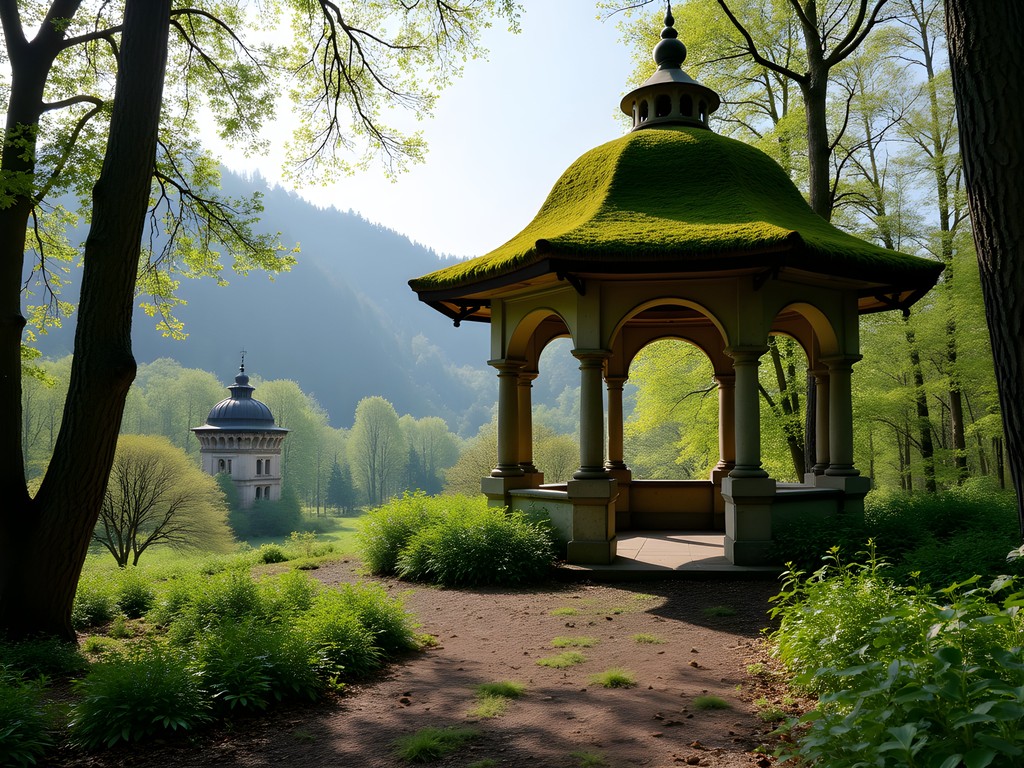
💡 Pro Tips
- Start the path early in the day when the light through the trees is most beautiful
- The trailhead is unmarked—look for a gap between the yellow villa and the small pension on Strada Cumpătu
- Bring a paper map as mobile reception is spotty in this section of forest
Casa Memorială George Enescu
While researching Sinaia's cultural heritage, I discovered that Romania's most celebrated composer, George Enescu, had a summer villa here. What surprised me was how few international visitors make the effort to find this musical sanctuary tucked away on a quiet residential street.
Vila Luminiș (House of Light) sits on a hillside about twenty minutes' walk from the town center. Enescu designed it himself in the 1920s as a retreat where he could compose in peace, surrounded by the natural beauty of the Carpathians. The architecture blends Romanian traditional elements with art nouveau touches—much like his music merged folk traditions with classical structures.
I arrived just as a spring shower cleared, leaving the gardens glistening in afternoon light. The caretaker, Mrs. Popescu, seemed delighted by my interest and offered a personal tour despite the official closing time approaching. The interior remains largely as Enescu left it, with his Bechstein piano positioned to capture views of the mountains that inspired his Romanian Rhapsodies.
What moved me most was discovering the composer's habit of working outdoors. Mrs. Popescu showed me the stone table in the garden where Enescu would write his scores during summer months, sometimes working through the night by lantern light. Standing in that spot, I could hear the same forest sounds that would have filtered into his compositions—the distinctive Carpathian birdsong and the distant murmur of mountain streams.
Before leaving, I sat for a moment in Enescu's reading nook, a small alcove with windows on three sides. Mrs. Popescu put on a vinyl recording of his Orchestral Suite No. 3—music composed in this very house—and for a few minutes, time seemed to fold in on itself, the distance between past and present collapsing in the amber afternoon light.

💡 Pro Tips
- Call ahead to arrange a visit as opening hours can be irregular
- Ask permission to see the garden composition table—it's not part of the standard tour
- Bring cash for the entrance fee as they don't accept cards
Local Flavors: Beyond Tourist Menus
My conservation work has taught me that ecological and cultural preservation go hand in hand—and cuisine often serves as the most direct connection between people and their landscape. In Sinaia, I was determined to taste dishes that reflected the true Carpathian culinary tradition, not just the standardized Romanian menu offered to tourists.
My search led me to Crama Domnească, not the restaurant bearing this name near the town center, but a small family-operated cellar dining room hidden on the upper edge of town. Here, Dana and her mother Ileana serve dishes based on recipes that predate even Peles Castle, using techniques passed down through generations of mountain dwellers.
'These mushrooms,' Dana explained as she set down a steaming earthenware dish, 'my grandfather taught me to find them in the forest when I was just five years old.'
The wild mushroom bulz—polenta stuffed with sheep cheese and forest mushrooms—was unlike any I'd tasted elsewhere in Romania, with subtle pine notes from being cooked over conifer wood. I recorded the experience in my travel journal, where I keep detailed notes on regional food traditions.
Equally memorable was their tochitura, a rich stew traditionally made by shepherds in the high pastures. While tourist restaurants serve simplified versions, Dana's family makes it the slow way—meat from local farms marinated for days in wine from their own small vineyard, with herbs gathered from specific mountain elevations depending on the season.
What makes this hidden spot special isn't just the food, but the stories that accompany each dish. Over a glass of homemade afinată (blueberry liqueur), Dana showed me black-and-white photographs of her ancestors collecting ingredients from the same forests where I'd been hiking earlier that day—a powerful reminder of how landscape shapes culinary heritage.
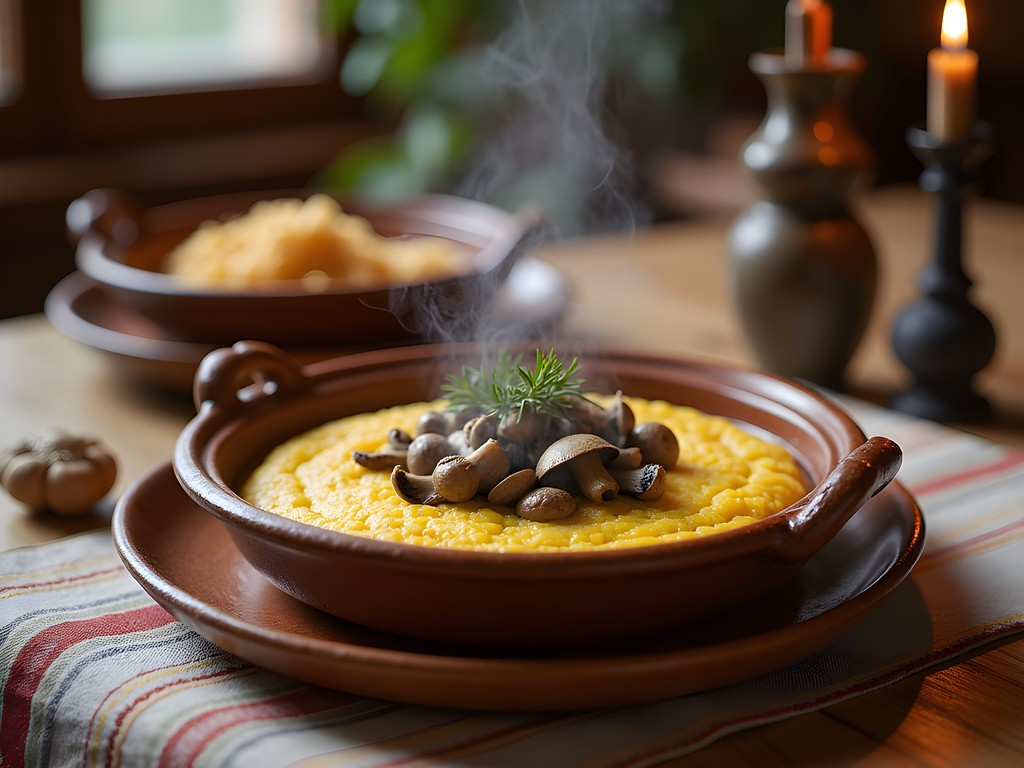
💡 Pro Tips
- To find Crama Domnească, look for the small wooden sign with a grape motif on Strada Spitalului
- Reservations are essential as they only serve 12 guests per evening
- Ask for the 'forest menu' rather than ordering individual dishes for the full experience
The Artisans of Old Sinaia
On my penultimate day in Sinaia, a steady spring rain provided the perfect opportunity to explore the indoor spaces often overlooked by castle-bound tourists. Following a tip from Mrs. Popescu at the Enescu house, I made my way to the old craftsmen's quarter tucked behind the town's main boulevard.
This network of narrow streets houses workshops that have operated continuously since Sinaia's establishment as a royal resort. Unlike the souvenir shops near Peles that sell mass-produced trinkets, these artisans create pieces using techniques that connect directly to Romania's cultural heritage.
My first discovery was Mr. Antonescu's woodcarving studio, marked only by a small wooden sign showing a carpenter's plane. Inside, the 82-year-old master was working on a traditional Romanian troiță (wayside cross) using tools inherited from his grandfather. The workshop smelled of pine resin and history.
'Before the castle came, before the tourists, there were just the monastery and the forest,' he told me, his hands never pausing their rhythmic carving. 'My family has worked with this wood for five generations.'
What fascinated me most was learning how the decorative patterns in his work contained encoded ecological knowledge. Certain motifs represented specific forest plants and their medicinal uses—a system of recording traditional knowledge that predated written documentation in the region.
Nearby, I found Atelier Mărginean, where Elena continues the tradition of natural wool dyeing using plants she forages from the surrounding mountains. The colors in her textiles—deep blues from cornflower, rich oranges from lichens, and soft greens from nettle—create a living color palette of the Carpathian ecosystem.
Elena allowed me to photograph her process for my conservation research, explaining how different elevation zones in the surrounding forests yield different pigment intensities. I couldn't resist purchasing one of her hand-woven scarves, dyed with plants gathered from the same forest paths I'd been exploring all week. It now travels with me as a wearable connection to Sinaia's living heritage.
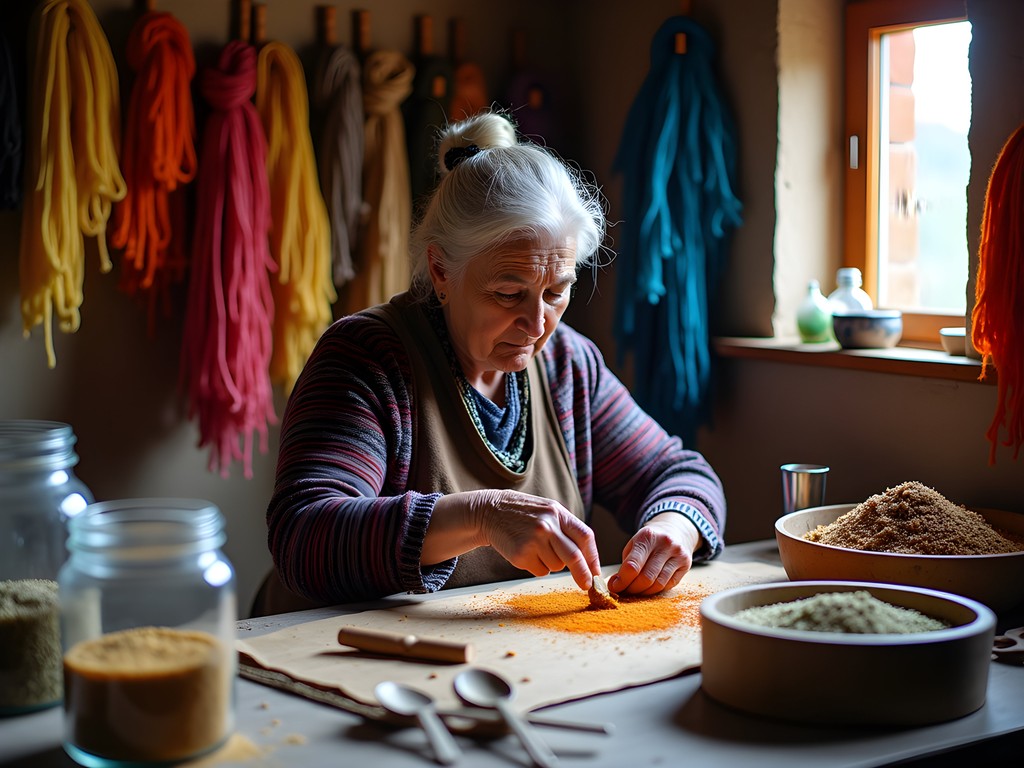
💡 Pro Tips
- Visit workshops in the morning when artisans are often more available for conversation
- Learn a few Romanian phrases—the older craftspeople rarely speak English but appreciate the effort
- Bring cash in small denominations as most workshops don't accept cards
Final Thoughts
As my train pulled away from Sinaia station, I watched Peles Castle recede into the distance—magnificent, certainly, but now just one thread in the rich tapestry of my week's exploration. The true Sinaia lives in its forgotten royal pathways, in the quiet monastery gardens where centuries of botanical knowledge persist, in kitchens where Carpathian culinary traditions remain unaltered by tourism, and in workshops where artisans encode ecological wisdom into their crafts. These spaces between attractions reveal how deeply culture and landscape intertwine here, each shaping the other over centuries. My ranger's notebook is filled with new connections between traditional knowledge and conservation practices that I'll bring back to my work in Australia. If you visit Sinaia, give yourself the gift of time—time to wander beyond the castle grounds, to follow unmarked paths, and to listen to the stories that don't make it into guidebooks. The hidden Sinaia awaits those willing to look beyond the obvious.
✨ Key Takeaways
- Sinaia's true character lies in the spaces between major attractions where culture and nature intertwine
- Local elders and artisans hold invaluable knowledge about traditional practices and hidden locations
- The forgotten Royal Path offers unique perspectives of Peles Castle and connects to ancient shepherd trails
- Traditional culinary and craft practices in Sinaia contain encoded ecological knowledge worth preserving
📋 Practical Information
Best Time to Visit
Late April to early June when spring blooms but summer crowds haven't arrived
Budget Estimate
€50-80 per day including mid-range accommodation, food, and local transport
Recommended Duration
5-7 days to explore beyond the main attractions
Difficulty Level
Moderate - Some Hidden Spots Require Uphill Walking On Uneven Terrain

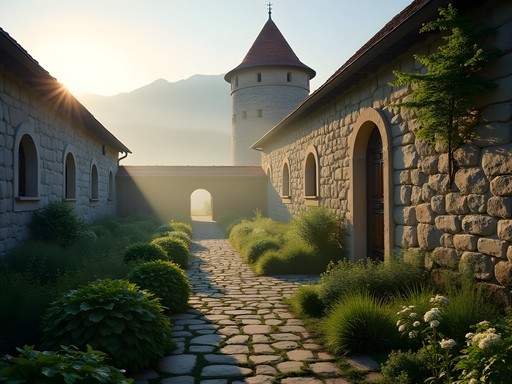












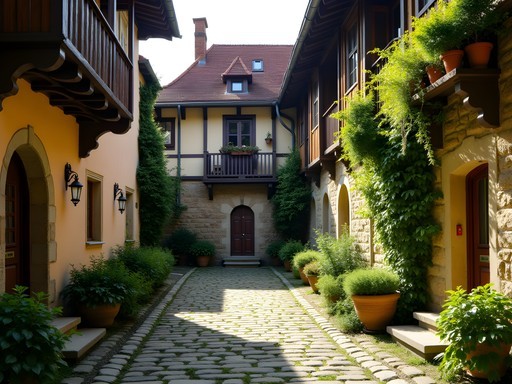
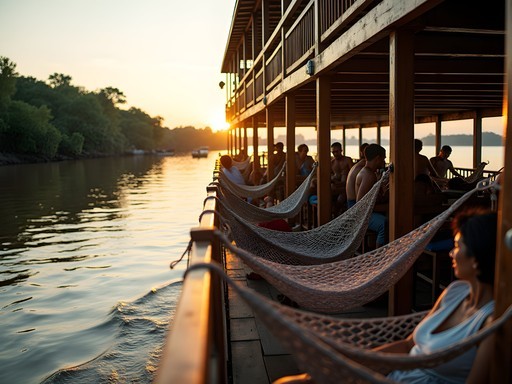
Comments
Sarah Powell
Maya, your piece really highlights what I love about travel writing - looking beyond the obvious attractions. I visited Sinaia three times before discovering that incredible 'Local Flavors' section you mentioned. The family-run restaurant Colț de Rai changed my entire perception of Romanian cuisine. Their sarmale with polenta and those forest mushroom dishes are extraordinary! For anyone visiting, I'd recommend allocating at least 2-3 days for Sinaia rather than treating it as a day trip from Bucharest. The morning light in the monastery gardens alone is worth the overnight stay. And the hiking trails that extend beyond the Royal Path offer some of the most peaceful forest walks I've experienced in Europe.
roamking
Any recommendations on where to stay in Sinaia if you want to be close to these hidden spots rather than near the castle?
Maya Coleman
I stayed at Pension Elena in the old town - simple but charming with an amazing host who knows all the local secrets. It's about 10 minutes walk from the monastery gardens and right by the start of the Royal Path!
skyguide
Beautiful photos! The morning mist looks magical.
Hunter Thompson
Maya, your post brought back so many memories! I stumbled upon Casa Memorială George Enescu by complete accident last year while trying to escape a sudden downpour. Ended up spending two fascinating hours there chatting with the elderly caretaker who shared incredible stories about Enescu's life. For anyone going, I'd add the tiny Café Regal around the corner - they serve this amazing pine needle tea that's perfect after hiking around town. My Merrell hiking boots were absolute lifesavers on those cobblestone streets and forest paths!
happyvibes
How easy is it to get to Sinaia from Bucharest? Is train the best option?
Hunter Thompson
Train is definitely the way to go! Takes about 1.5 hours from Bucharest Nord station and the mountain scenery along the way is incredible. Super affordable too - I paid like €8 for a return ticket. Just make sure to book a few days ahead during summer weekends as locals escape the city heat.
happyvibes
Thanks Hunter! That's really helpful. Definitely going to take the train then!
coffeediver
Those monastery gardens look absolutely stunning! Adding to my bucket list!
journeyway
This post couldn't have come at a better time! I visited Sinaia last summer and spent the whole day at Peles Castle, completely missing these hidden spots. The Forgotten Royal Path sounds magical - wish I'd known about it. Definitely bookmarking this for my next trip to Romania. Maya, your writing really captures the atmosphere of these lesser-known places!
Maya Coleman
Thanks journeyway! So many visitors miss these spots because Peles (understandably) steals the show. Hope you get to explore the Royal Path next time - early morning is magical when the mist is still hanging in the trees.
skyqueen
Love this! Peles Castle was so crowded when we went. Wish I'd seen this before our trip!
greenstar
Same! The castle was beautiful but packed with tour groups. Next time I'm checking out these hidden spots for sure.
MountainHiker
Great post! If anyone's planning to visit, there's also a fantastic viewpoint about 20 minutes hike above the monastery that looks down over the whole town. Just follow the yellow-marked trail from behind the monastery - it's steep but worth it!
SoloExplorer
Is that trail open year-round? Planning a winter visit.
MountainHiker
It's technically open but can be dangerous when icy. I'd only attempt it with proper winter gear if there's snow.
mountainone
Planning a trip to Sinaia in October. Is it worth staying overnight or can these hidden spots be seen in a day trip from Bucharest? Also wondering about hiking trails beyond the Royal Path - any recommendations for moderate day hikes?
Maya Coleman
Definitely stay overnight if you can! One day isn't enough to properly explore beyond Peles. For hiking, try the trail to Stâna Regală (Royal Sheepfold) - about 4 hours round trip with stunning mountain views. I used my hiking poles which were lifesavers on some of the steeper sections. October should have beautiful fall colors too!
Taylor Moreau
I second Maya's recommendation to stay overnight. Hotel Caraiman offers reasonable rates and is centrally located. The morning light on the mountains is spectacular and worth waking up for.
Venture X
Premium card with 2X miles, $300 travel credit, Priority Pass